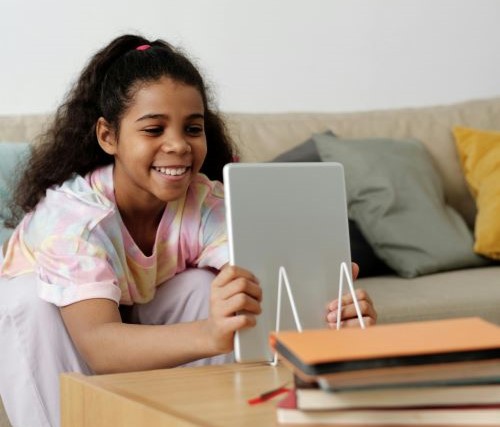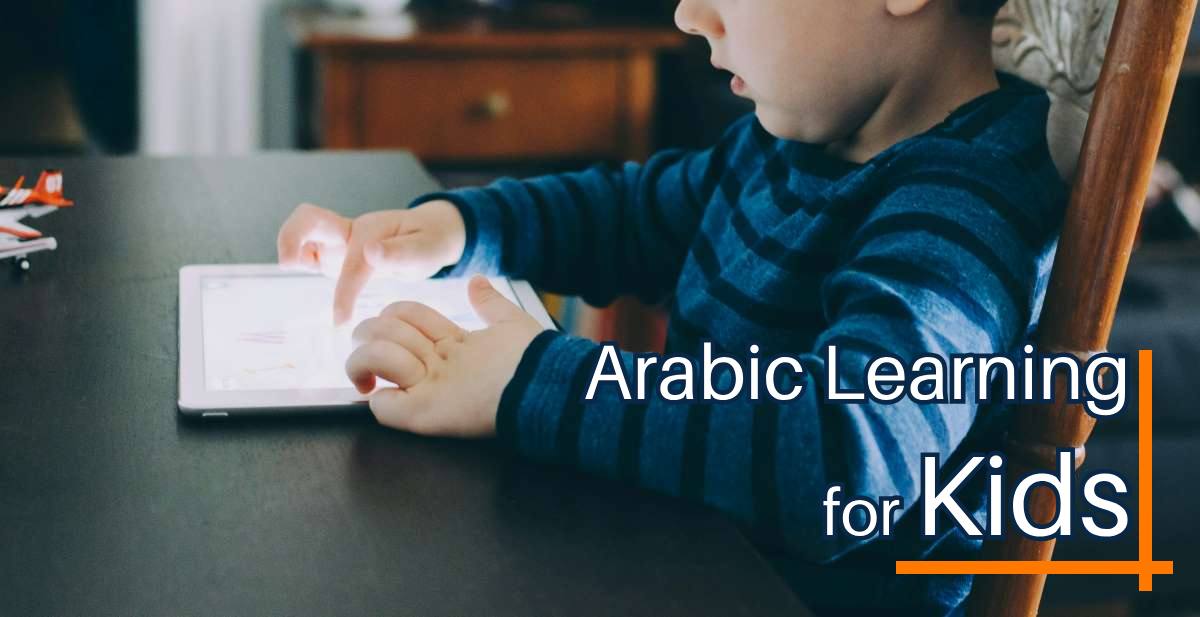Teaching children a new language can seem intimidating, but introducing Arabic to your little ones doesn’t have to be daunting when done playfully.
In this post, I will share strategies parents and educators can leverage to spark kids’ interest in the Arabic language and culture through engaging activities they’ll love. By incorporating games, movement and visuals geared toward their developing minds, even the youngest of learners can start laying a strong foundation of Arabic for kids.
Furthermore, studies show that starting language exposure early leads to enhanced cognitive skills and future multilingualism. So read on for ideas to help your children fall in love with Arabic in a fun way!
You can visit a similar article 5 Best Ways To Learn The Arabic Language Fast
How to Start Arabic Learning for Kids?

Learning Arabic as a kid can be a fun and rewarding experience, but it can also be challenging and frustrating at times. Arabic is not an easy language to learn, especially for native English speakers. It has a different script, grammar, and sound system from English, and there are many Arabic dialects and varieties that can vary significantly from the standard or classical form.
However, with the right approach, methods, and resources, learning Arabic as a kid can be made easier and more enjoyable. Here are some of the best practices and tips for Arabic learning for kids:
Start Early
The earlier you introduce your child to Arabic, the better. Research has shown that children have a natural ability to acquire languages, and that this ability declines with age. Starting early can help your child develop a native-like pronunciation, intonation, and fluency in Arabic, and avoid interference from their first language. It can also help your child develop a positive attitude and motivation towards Arabic learning, and make it a natural and integral part of their life.
Use A Variety of Methods and Resources
Learning Arabic as a kid should not be limited to textbooks and worksheets. You should use a variety of methods and resources that suit your child’s age, level, learning style, and interests. For example, you can use songs, stories, games, cartoons, movies, podcasts, apps, websites, and online courses to make Arabic learning for kids more fun and engaging.
You can also use flashcards, posters, stickers, labels, and charts to reinforce vocabulary and grammar. You can also use real-life situations and contexts, such as shopping, cooking, traveling, or celebrating, to make Arabic learning for kids more relevant and meaningful.
Focus on Communication and Comprehension
The main goal of learning Arabic as a kid should be to communicate and comprehend the language, not to memorize rules and facts. You should focus on developing your child’s listening and speaking skills, and expose them to authentic and natural Arabic as much as possible.
You should also encourage your child to use Arabic in everyday situations and interactions, and provide them with positive feedback and correction. In addition, you should avoid translating everything from or to English(or your native language), and instead use gestures, pictures, examples, and explanations in Arabic to help your child understand and express themselves.
Choose the right level and pace:
Arabic learning for kids should be challenging, but not overwhelming. You should choose the right level and pace for your child, based on their age, level, learning style, and goals. You should start with the basics, such as the alphabet, numbers, colors, shapes, greetings, and introductions, and gradually introduce more complex topics, such as grammar, vocabulary, and culture.
You should also review and revise what your child has learned regularly, and monitor their progress and performance. You should also adjust the level and pace according to your child’s needs and preferences, and avoid pushing them too hard or too fast.
Choose Age-Appropriate Materials
Naturally, the approach needs adjusting based on each child’s maturity level. However, with care and creativity, Arabic can absolutely be part of any preschooler or early elementary student’s world. For toddlers, focus on basic greetings, colors, shapes and numbers through fingerplays, songs and sensory activities. Around ages 3-5, gradually introduce short phrases and simple stories.
School-aged children have greater attention spans for beginning vocabulary and short conversational skills. Select age-optimized materials that engage their natural curiosity without frustration. Continuous exposure in a playful context is key at this stage for Arabic learning for kids. Progression feels steady when priorities align with developing minds.
Incorporate Movement into Lessons
Young bodies need purposeful movement to stay focused and engaged. Integrate physical motions into daily Arabic exposure through actions, songs and dances. For example, assign a gesture to each vocabulary word introduced such as waving hello or bouncing to the number words. Take advantage of their love for imaginative role-playing by acting out simple storylines together. Designate areas of your home for interactive stations playing follow the leader or red light, green light commands.
Outdoor adventures provide perfect contexts for chatting about nature, colors and actions for Arabic learning for kids. Let your child’s boundless energy enhance comprehension as language accompanies physical fun. Movement multiplies memory-making in developing brains.
Tell Stories Visually through Pictures
Visual aids captivate the minds of little ones just beginning to appreciate images. Retell familiar tales showing illustrations page by page to spark curiosity about new vocabulary. Create personalized storyboards together. Photograph people, places and objects from your child’s activities to sequence into a narrative.
Laminate pictures for durability as a reference during storytime. Display vocabulary flashcards prominently around the house. Point out real-life instances of targeted words throughout the day. Visual learners absorb language insights most readily through paired photos. Interactive story maps optimize preschooler engagement for significant Arabic learning for kids despite limited reading skills.
Bring Culture to Life through Arts and Crafts
Hands-on projects offer satisfying ways to deepen lessons interactively. Guide kids making silhouette art of favorite story characters. Fingerpaint Flags representing nations speaking Arabic. Mold figurines out of salt dough modeling after cultural landmarks. Weave patterns inspired by traditional garments.
Get crafty shaping bread or modeling with play dough while conversing. Pour rice or beans into different shapes of empty containers. Fold origami emulating regional designs. Creative expression paired with vocabulary through Arabic learning for kids enhances both language exposure and cultural appreciation. Young imaginations blossom through such multi-sensory activities.
Play Games for Interaction and Reinforcement
Short interactive games optimize focus while instilling Arabic skills through fun. For example, have a shape, color or number scavenger hunt around the house calling things out loud. Build patterns with blocks narrating the process in targeted words. Act out familiar routines dramatizing class interactions, meals or bedtime using simple, repetitive sentences.
Play Simon Says-style giving directions and asking questions. Turn pretend into an opportunity for role-playing short conversational scenarios. Games motivate practice through competition or cooperation bringing smiles along with learning. Laughter and applause reinforce success to keep young minds engaged throughout the whole Arabic learning for kids process.
Opt for Total Immersion When Possible
Nothing accelerates Arabic learning for kids exposure quite like full linguistic surround sound. When budget and logistics allow, you can make some time for online Arabic for kids classes or take a cultural trip together, enroll older children in Arabic camps or classes, or temporarily relocate – even just for a few weeks. The total sensory experience expands vocabulary exponentially as immersion encourages independent understanding and expression.
Resist translating altogether in favor of gestures and visual cues. Interact extensively with locals through activities and explorations. Note impacts on confidence too as even the limited intense Arabic atmosphere inspires kids. With preparation and open-mindedness on difficulties, lived immersion creates memories and skills like nothing else.
Check our recommendations for online Arabic for kids classes.
Remember, Learning Should Be Fun!
Ultimately, delivering Arabic to kids focuses most on sparking genuine enthusiasm through play, wonder and bonding. Forcing rigid routines risks backfiring on little minds accustomed to following freedom and interests. Maintain flexibility adapting to developmental phases. Laugh together at mistakes and let pride blossom internally from attempts rather than corrections.
Infuse lessons seamlessly throughout natural interactions to optimize retention. Monitor signals when interest begins flagging then switch activities. Above all, foster the same joy and comfort you give your native language for a foundation of positivity and confidence. With patience and appropriate techniques, witnessing little ones start to speak another language brings its own special rewards!
Set Realistic Yet Inspiring Goals Appropriate for Each Age
While exposure to multiple languages carries lifelong benefits, avoid setting pressures or expectations too advanced for young developmental levels. Maintaining a positive attitude toward learning ahead of specific milestones optimizes motivation. For toddlers and preschooler kids, consider goals like recognizing basic words, responding to simple questions/commands enthusiastically or singing one familiar song.
Elementary students may aim to greet, count to 10 confidently, name colors/shapes or tell a story using familiar phrases practiced. Note accomplishments through praise and celebration keeping challenges within each child’s “zone of proximal development.” Gradual progress feels steady and fuels ongoing engagement this way. Success breeds success when aspirations align appropriately!
Tailor Learning to Different Temperaments and Styles
Every child absorbs information uniquely based on natural bents. Some thrive on quiet one-on-one attention while others excel in group dynamics. Observant types absorb visually whereas hands-on builders retain best through crafting. High-energy children stay focused through motion. Quieter souls need unpressured comfort.
Respect individual personalities opting for a blend of individual, partner and small group activities. Auditory, visual, kinesthetic – incorporate various methods tapping each learner’s strengths. Nurture what engages rather than frustrates. With care and intentional options personalized to your child, even challenges appear conquerable keeping young minds engaged in the Arabic learning for kids journey.
Incorporate Digital Resources Strategically
Technology appropriately augments early exposure when coupled interaction. Apps containing familiar stories read aloud boost literacy. Videos modeling proper pronunciation or everyday scenarios provide reference points. Online flashcard programs introduce novelty while reviewing grasped concepts. Music/dance videos encourage bodily fun practicing repeated lines.
Limit passive “babysitting” screen time in favor of co-engagement where you discuss, act out or build upon what’s seen together. Make technology an additional dynamic tool rather than a replacement for human interaction maximizing knowledge retention and balanced development. Strategic integration provides valuable supplementary exposure for Arabic learning for kids.
Establish a Supportive Home Environment
Consistent modeling inspires little linguists perhaps most significantly. Speak Arabic regularly yourself around the house declaring activities, naming objects encountered, and singing songs. Post visual cues such as numbers, shapes or vocabulary pocket-charts where eyes frequently fall. Cook cultural recipes together conversing through steps.
Display regional books and toys around for natural exposure. Read dual-language storybooks. Create an atmosphere where the target language feels comfortable, accessible and reinforcing in regular life. Little ears absorb best when curiosity finds answers readily available through everyday exchanges. An early foundation built jointly sets both parent and child up for success in future multilingualism!
Final Words
Countless avenues exist for instilling Arabic into little minds creatively. By making Arabic learning for kids an extension of play through interactive, visual and movement-based activities tailored developmentally, even the youngest learners can start benefiting cognitively while bringing their own joy to the process. With patience, flexibility and heartfelt guidance, nurture a lifelong love of language and cultural discovery from the outset. Most importantly, remember learning should always feel like fun for curious young spirits!
Reference Website: Arabic Tutor Online
